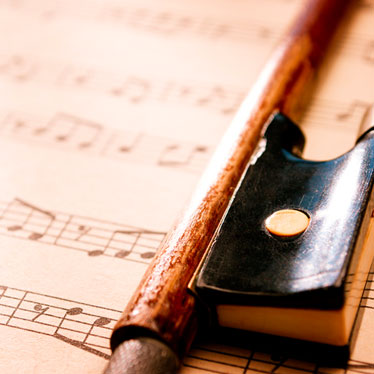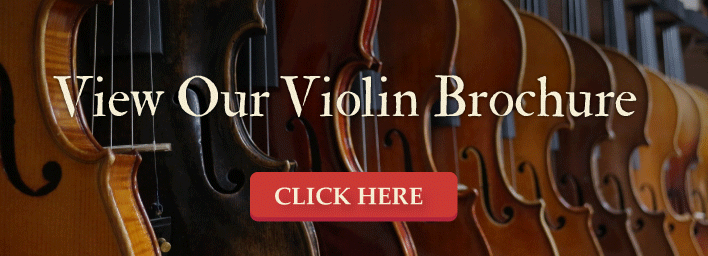Does My Violin Bow Impact My Playing or the Way I Sound?

If you’re new to learning the violin, there are many aspects involved in playing that you’ll need to become familiar with before you can reach the level of excellence that you have in mind.However, many new students fail to realize right away that their bow has a significant influence on both their ease of playability, as well as the sounds that their instrument is able to create.
Indeed, the bow makes a very important contribution to these aspects, but it can be difficult to pinpoint exact problems if you don’t understand the different features of your bow. However, understanding the specifics about your bow that influence playability and tone, you can make bow decisions that will improve your playing and your sound quality.
Bow History and Basics
Bows are used to play the violin family of stringed instruments, often referred to as “bowed string instruments,” that include the violin, viola, cello, and double bass. And just as the quality of craftsmanship used to create the instrument effects the sound quality produced by it, the bow used to play it has an impact too. You can observe this by playing the same instrument with different bows. You’ll hear subtle variations in the tone, projection, and timbre, just by changing your bow.
Like your string instrument, your bow is intricately designed and made with precision. The craftsmanship and materials used to create it will not only determine the price, it will also play a key role in how the bow performs. Indeed, the bow you are using today is the result of centuries of refined designs and improvements.
Prior to the invention of the “modern” bow around the late 1800’s, instruments in the violin family were played using what is called the “early” bow. These early bows (sometimes called baroque bows) were designed so that the curvature actually bowed away from the hair, providing an agile, responsive performance. However, the projection was lacking.
The Tourte family in France is generally credited with the development of the modern bow design. The changes they instituted have lasted, namely the camber direction (arching toward the hair, which offers more tension and resistance), a shortened tip whose shape accelerates the flex, and the inclusion of the eyelet and screw which allows players to adjust the tension.
Bow Aspects and How They Affect Performance
You bow is a tapered stick usually made of wood, Pernambuco being the highest prized variety. However, the rarity of this wood also makes it very expensive, so other materials such as Brazilian wood and fiberglass are often used as well.
Recently, carbon fiber composite bows have grown in popularity. The advantageous features allow it to retain the flexibility and strength required, and many musicians prefer this type of bow to the more exclusive Pernambuco. Basically, the level of flexibility in the material dictates how easy or difficult it is to produce clear tones with the bow.
The “ribbon” refers to the width of the horsehair, and a ferrule is used to separate and hold the hair so that it stays the proper width. White hair is typically smoother than black and used for violin family instruments other than the double bass, for which the rougher sound is desirable. The correct amount of friction is attained by using rosin (a very sticky resin). The type of hair, amount of rosin, and ribbon width all determine the sound that the bow is able to produce.
By understanding how the elements of your bow work together, you can determine whether buying a new bow or having yours re-haired will improve the quality of the sound you create.
If you’re considering a new purchase, it’s a good idea to visit your local instrument dealer to try out a few different models, because essentially, the bow that’s the best for you is the one that sounds great with your instrument and feels great in your hand.

